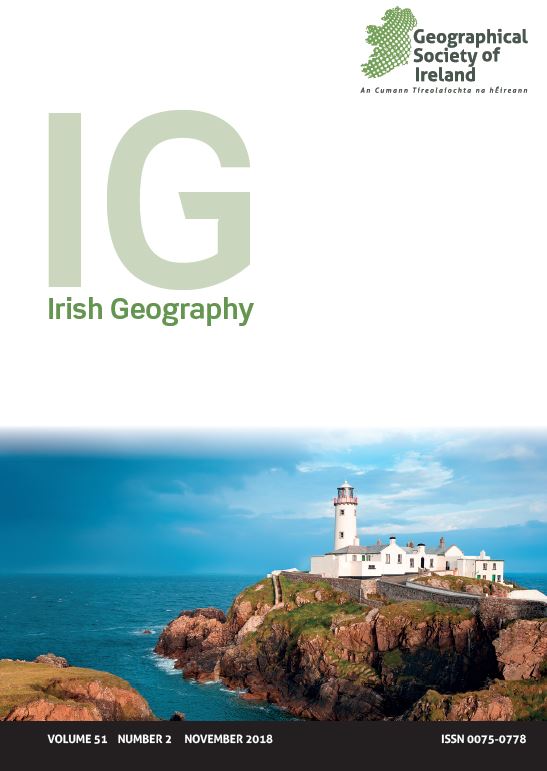Paraglacial evolution of the Irish landscape
DOI:
https://doi.org/10.55650/igj.2018.1370Abstract
Paraglacial processes represent the dominant mechanism of geomorphic change in deglaciating landscapes worldwide and are now being increasingly recognised as controls on deglacial and postglacial landscape dynamics. This reflects the influence of glacigenic lithospheric loading/unloading cycles and patterns of glacigenic erosion and deposition. Ireland is an important location for studying the impacts of paraglacial processes in the landscape, as it was strongly imprinted by the erosional and depositional imprints of late Pleistocene glaciations and was affected by rapid shifts in North Atlantic climate. Using examples from mountains, rivers and coasts from across Ireland, this study examines some of the varied landscape responses to paraglacial relaxation in these different settings. The purpose behind this study is to show how the styles of paraglacial response may vary over time and space, even within a single regional landscape, and this can help assess the sensitivity of different environments affected by paraglacial relaxation. This study proposes an evolutionary model that describes the paraglacial sediment cascade that has shaped the Irish landscape during the lateglacial and Holocene. Consideration of paraglacial processes can yield a better understanding of the postglacial evolution of mountain, river and coastal landscapes in Ireland.Downloads
Published
2019-01-28
How to Cite
Knight, J., & Harrison, S. (2019). Paraglacial evolution of the Irish landscape. Irish Geography, 51(2), 171–186. https://doi.org/10.55650/igj.2018.1370
Issue
Section
Articles
URN
License
Authors who publish with this journal agree to the following terms:- Authors retain copyright and grant the journal right of first publication with the work simultaneously licensed under a Creative Commons Attribution License that allows others to share the work with an acknowledgement of the work's authorship and initial publication in this journal.
- Authors are able to enter into separate, additional contractual arrangements for the non-exclusive distribution of the journal's published version of the work (e.g., post it to an institutional repository or publish it in a book), with an acknowledgement of its initial publication in this journal.
- Authors are permitted and encouraged to post their work online (e.g., in institutional repositories or on their website) prior to and during the submission process, as it can lead to productive exchanges, as well as earlier and greater citation of published work (See The Effect of Open Access).


